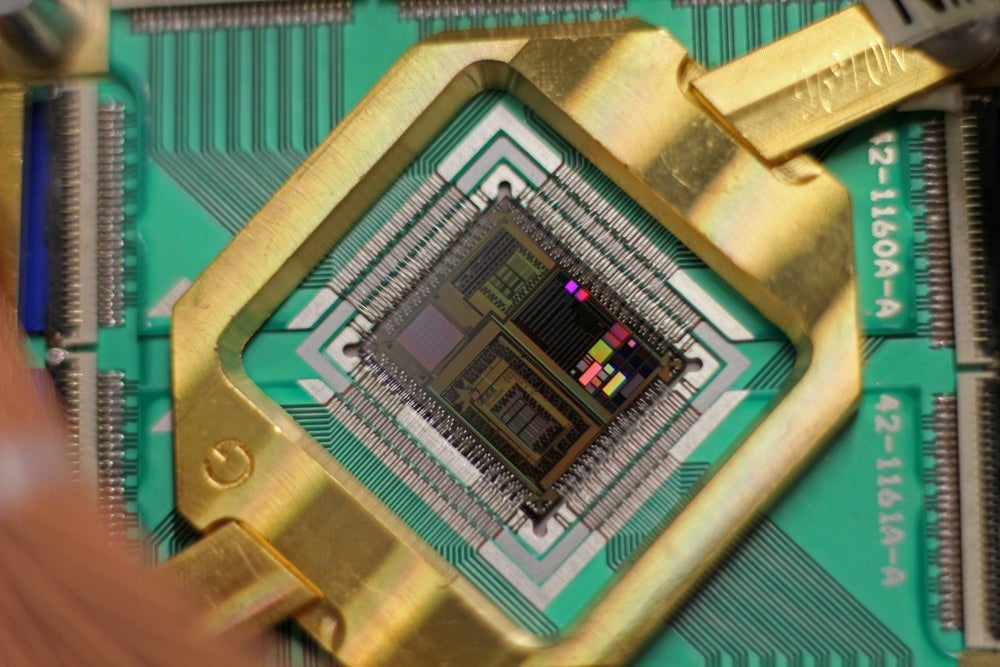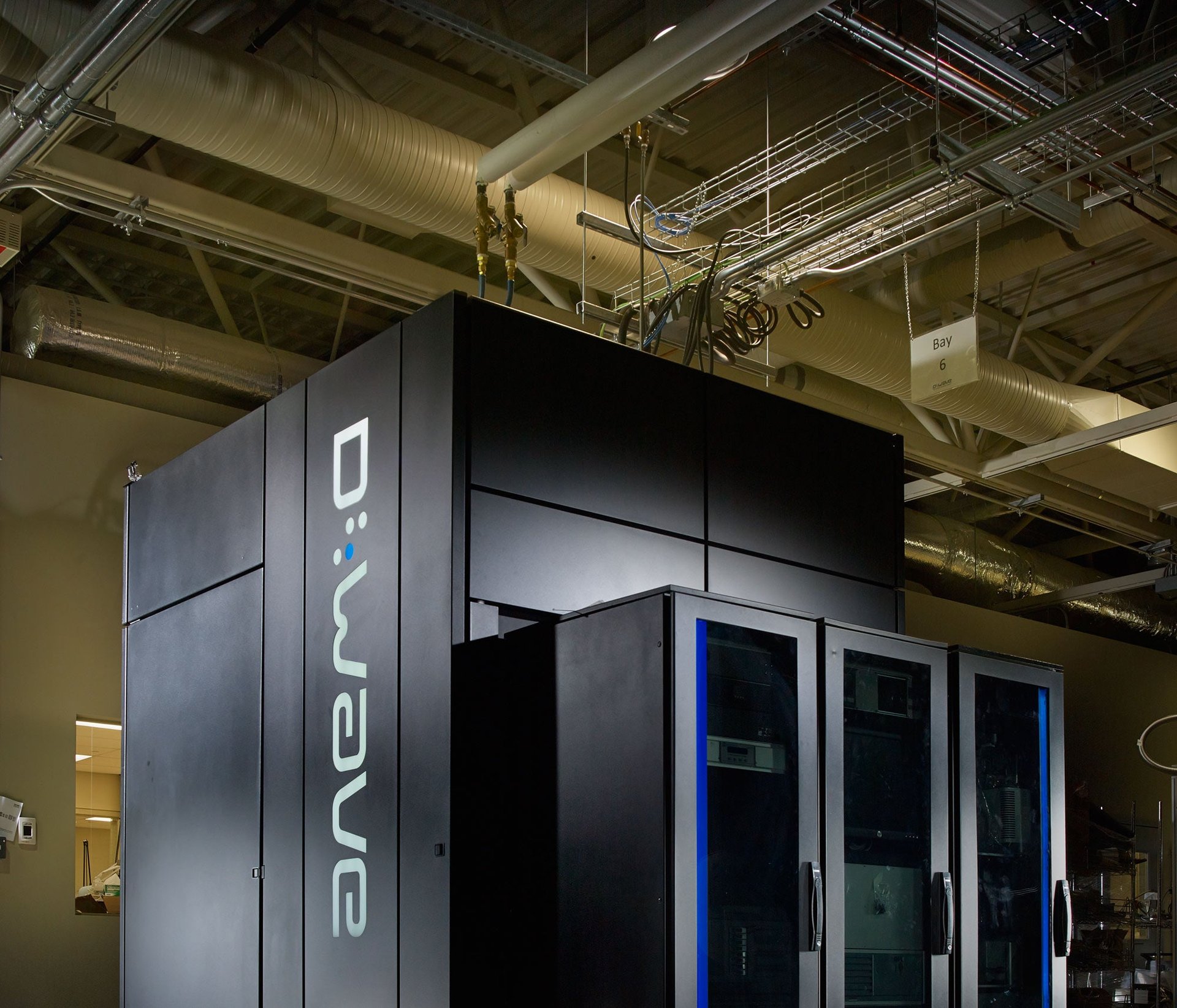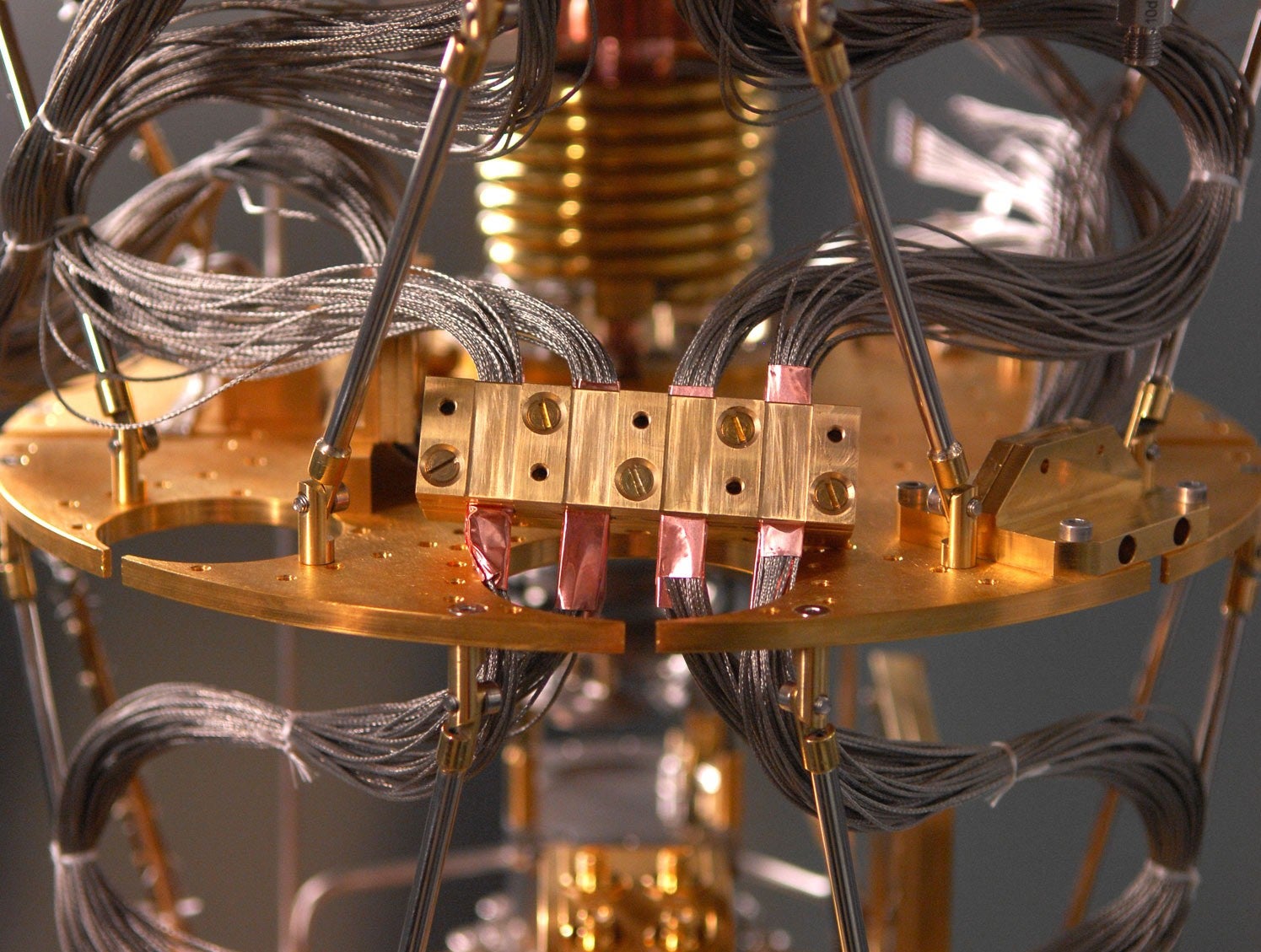Why nobody can tell whether the world’s biggest quantum computer is a quantum computer
For the past several years, a Canadian company called D-Wave Systems has been selling what it says is the largest quantum computer ever built. D-Wave’s clients include Lockheed Martin, NASA, the US National Security Agency, and Google, each of which paid somewhere between $10 million and $15 million for the thing. As a result, D-Wave has won itself millions in funding and vast amounts of press coverage—including, two months ago, the cover of Time (paywall).


For the past several years, a Canadian company called D-Wave Systems has been selling what it says is the largest quantum computer ever built. D-Wave’s clients include Lockheed Martin, NASA, the US National Security Agency, and Google, each of which paid somewhere between $10 million and $15 million for the thing. As a result, D-Wave has won itself millions in funding and vast amounts of press coverage—including, two months ago, the cover of Time (paywall).
These machines are of little use to consumers. They are delicate, easily disturbed, require cooling to just above absolute zero, and are ruinously expensive. But the implications are enormous for heavy number-crunching. In theory, banks could use quantum computers to calculate risk faster than their competitors, giving them an edge in the markets. Tech companies could use them to figure out if their code is bug-free. Spies could use them to crack cryptographic codes, which requires crunching through massive calculations. A fully-fledged version of such a machine could theoretically tear through calculations that the most powerful mainframes would take eons to complete.
The only problem is that scientists have been arguing for years about whether D-Wave’s device is really a quantum computer or not. (D-Wave canceled a scheduled interview and did not reschedule.) And while at some level this doesn’t matter—as far as we know, D-Wave’s clients haven’t asked for their money back—it’s an issue of importance to scientists, to hopeful manufacturers of similar machines, and to anyone curious about the ultimate limits of humankind’s ability to build artificial brains.

Quantum computers: a grossly oversimplified introduction
The foundation of all computing is a logic gate—a simple yes/no switch. In modern computers, one position of the switch represents 0; the other represents 1. Your laptop computer contains billions of such gates, each of which switches between 1 and 0 billions of times a second.
Nonetheless, your computer has a handicap, imposed by classical physics. At any given moment it can only be in one state—one particular combination of 1s and 0s across those billions of gates. It has to step through a sequence of such states to complete a calculation. But what if, instead, a vast number of copies of your computer could somehow exist in parallel, each representing one of these possible states, and collectively perform the entire calculation simultaneously?
Essentially, this is what quantum theory says can happen. The key is to shrink the gates small enough that quantum physics, which describes the behavior of extremely small objects, takes over from classical physics. (Some quantum gates consist of a single atom, held in place by electric and magnetic fields.) Such a tiny gate, called a “qubit,” can exist as a kind of combination—called a “superposition”—of 1 and 0. A computer made of qubits would, in some sense, exist in all the possible combinations of 1s and 0s at once.
Physicists differ in how they interpret this. Some literally believe a myriad parallel universes exist, each containing a separate copy of the computer; some have a more minimalist explanation. But the outcome is the same: In principle, it’s possible to reap the fruits of all that parallel processing to arrive at a result faster—so much faster that even the hardest calculation could become pretty much instantaneous.
(For more details in something resembling English, see this interview with MIT’s Scott Aaronson—a long-time skeptic of D-Wave—in the Washington Post, this excellent blog post by Michael Nielsen, and, thus prepared, this Reddit thread.)
Yes it is. No it isn’t
But why should it be so hard to figure out whether a computer is quantum or not? Surely the simplest thing to do is take it apart and see how it works. Or, failing that, run it alongside a classical computer and see which performs better.
Alas, science, like all reality, is not always that straightforward.
The controversy surrounding D-Wave is rooted in the fact that the company doesn’t claim to have built a full-fledged “universal quantum computer” that can tackle any problem. In particular, it doesn’t claim to able to crack secret codes; if it did, the argument would be over quickly. The technique it uses, called “quantum annealing”—which we won’t even try to explain—is only good for solving specific sorts of mathematical puzzles called optimization problems. As their name implies, these involve finding the quickest or lowest-cost way to do something. (That could make the technique useful to banks and mining companies, but not spy agencies.)
The trouble is, it’s possible to build a device that produces a similar result to quantum annealing without any quantum behavior—i.e., without invoking superpositions and parallel universes. So the question is: Is the D-Wave machine doing quantum annealing, or just something that looks like it? And this is where things get tricky.
You can’t look inside
That D-Wave’s computer contains qubits is not in dispute. The current incarnation, the D-Wave 2, has 512 of the little things, microscopic loops of superconducting metal chilled to a fraction of a degree above absolute zero, which represent 0 and 1 by means of tiny currents flowing either clockwise or counterclockwise. The question is, what are they doing in there?
What they should be doing, in theory, is hovering in superpositions while a calculation is going on. When it’s time to spit out an answer, each qubit comes to rest on either 0 or 1, the machine reads them all, and it provides a result.
But there’s no way to tell what actually happened. It’s in the nature of quantum physics—as outlined in the famous paradox of Schrödinger’s cat—that you cannot look at something that is exhibiting quantum behavior without stopping its quantum behavior. If you try to observe a qubit while it’s in a superposition of 0 and 1, you will see it as either 0 or 1, and you won’t know what it was doing before you started looking.
D-Wave’s machine, then, is a black box, both literally and figuratively. The only thing researchers can do is to see what results the machine outputs. In that, it is not dissimilar to the story of the mechanical Turk, an 18th-century machine that could play chess. The output—chess moves—were legitimate, but the computing magic came from a real-life human being inside the box.

You can’t (necessarily) do a speed test
If quantum computers are so much faster, couldn’t you just run the same calculation on a D-Wave and a regular machine and time them? Unfortunately not. As MIT’s Scott Aaronson explained to the Washington Post, whether or not a quantum computer should actually be faster depends a lot on the kind of problem you’re solving. Breaking cryptographic codes is so fantastically labor-intensive that it would be a pretty unequivocal test. But “with the optimization problem, we don’t really know if we’d get a speedup,” he said.
Even if there were a speedup, it would be hard to measure. There was a good deal of hype about an experiment last year by a scientist whom D-Wave had hired as a consultant, showing that the D-Wave 2 did a certain calculation 3,600 times faster than a conventional machine. But as it turned out, the likelier reason the conventional computer was slow was that its software was slow. Other researchers said they’d been able to make an ordinary laptop, using different software, run as fast as the D-Wave.
Even D-Wave admits that in its work with Google, it’s machines were only “comparable or slightly better” than conventional computers. Google wrote on its research blog a year ago that it has been able to do some interesting things with its D-Wave, but carefully avoided claiming that they were things only a quantum computer could do.

You have to compare the answers, and even then…
Probably the most definitive way to tell whether or not the D-Wave is doing what its creators claim is to run it side-by-side with classical computers trying to solve the same problem and compare not their speeds, but the answers they give. There are several different ways to solve an optimization problem, and they give subtly different answers. If the D-Wave’s answers are like those from classical computers, it’s behaving as a classical computer. If not, it’s doing something quantum. In fact, you can even make a classical computer run a kind of simulation of quantum annealing, and compare that with the D-Wave’s answers too.
That’s the theory, at least. Unfortunately, even this approach hasn’t been conclusive so far. In January a group of researchers at Berkeley and IBM published a paper finding that the results from D-Wave’s machine could just as easily have come from a computer that uses classical physics. Yet in March, researchers at the University of Southern California and University College London published a paper supporting D-Wave’s contention that its computer does indeed involve some degree of quantumness.
So how can we ever tell what’s a quantum computer?
This scientific back-and-forth may yet reach a definitive conclusion. If not, we might just have to wait for quantum computing to evolve further. Conventional computers today are wonderful, general-purpose machines. Quantum computers are very much in their infancy, and just like the vacuum-tubed machines of old, they are good only at specific things.
Michele Mosca, a co-founder of the Institute for Quantum Computing at the University of Waterloo in Canada, points out that the very meaning of the words “quantum computer” is fuzzy. He proposes five (actually five-and-a-half) definitions, which we’ve listed at the bottom of this article for the technically minded.
The D-Wave, Mosca says, definitely meets definition 2, and probably its stronger variant, meaning that it is behaving somehow differently from classical computers, but not necessarily faster. If further research can show that it meets definition 3, that means it can be faster than classical machines at certain tasks, provided the problems aren’t too large. If it meets definition 4 (the best, Mosca says, that it aspires to) then it has the potential to continue to be faster for any larger, more complex input —though again, only for certain tasks.
That would still be hugely important. It would mean that the D-Wave is taking advantage of the weird properties of quantum physics to do things that, until not so long ago, were thought literally impossible, and open up the ability to solve problems that would otherwise remain out of reach.
But the full power of a quantum computer will be realized only when a machine can satisfy definition 5—a general-purpose device that far outstrips conventional computers at any task they can perform. That machine has not yet been built.
Footnote: Michele Mosca’s five-and-a-half definitions of “quantum computer”
Definition 1:
Since the world is quantum, any computer is a quantum computer. Conventional computers are just weak quantum computers, since they don’t exploit intrinsically quantum effects, such as superposition and entanglement.
Definition 2:
A quantum computer is a computer that uses intrinsically quantum effects that cannot naturally be modeled by classical physics. Classical computers may be able to mathematically simulate instances of such computers, but they are not implementing the same kinds of quantum operations.
Definition 2’:
Definition 2, where there are strong tests or proofs of the quantum effects at play (e.g. by doing Bell tests).
Definition 3:
A quantum computer is a computer that uses intrinsically quantum effects to gain some advantage over the best known classical algorithms for some problem.
Definition 4:
A quantum computer is a computer that uses intrinsically quantum effects to gain an asymptotic speed-up over the best known classical algorithms for some problem. (The difference with definition 3 is that the advantage is a fundamental algorithmic one that grows for larger instances of the problem; versus advantages more closely tied to hardware or restricted to instances of some bounded size.)
Definition 5:
A quantum computer is a computer that is able to capture the full computational power of quantum mechanics, just as conventional computers are believed to capture the full computational power of classical physics. This means, e.g. that it could implement any quantum algorithm specified in any of the standard quantum computation models. It also means that the device is in principle scalable to large sizes so that larger instances of computational problems may be tackled.